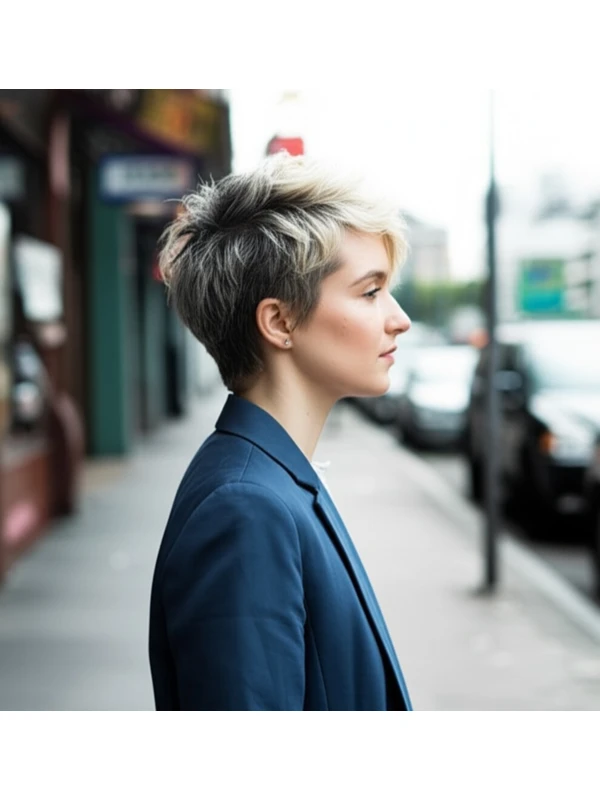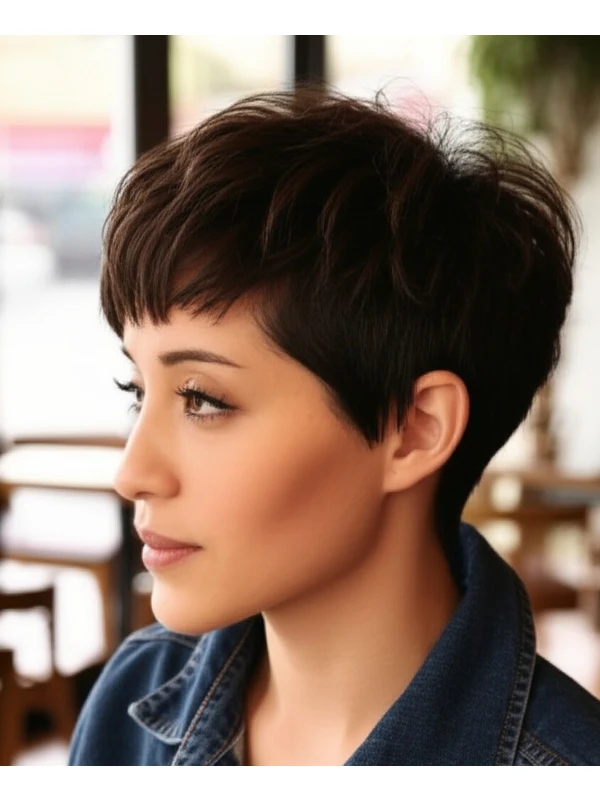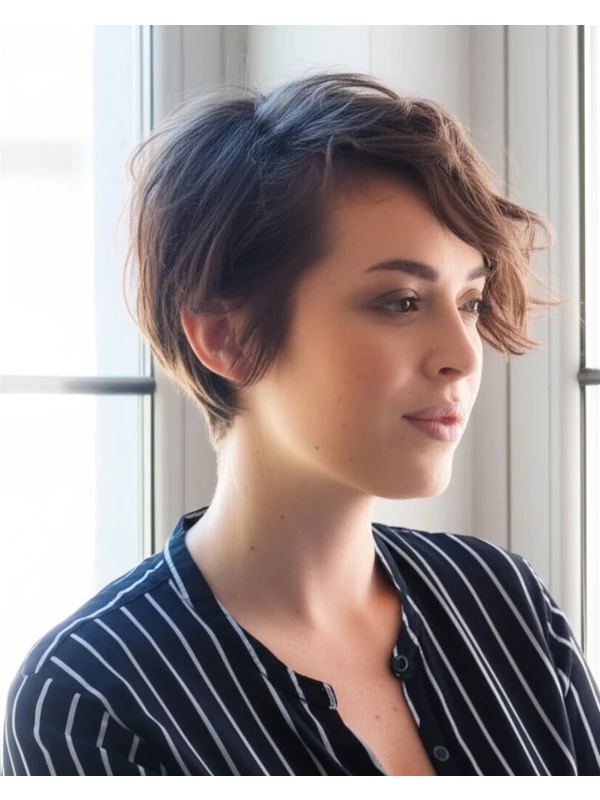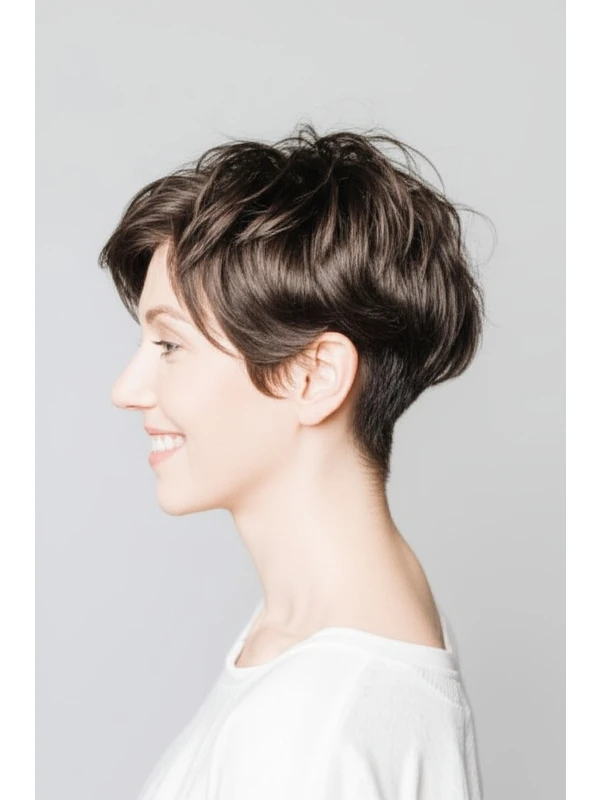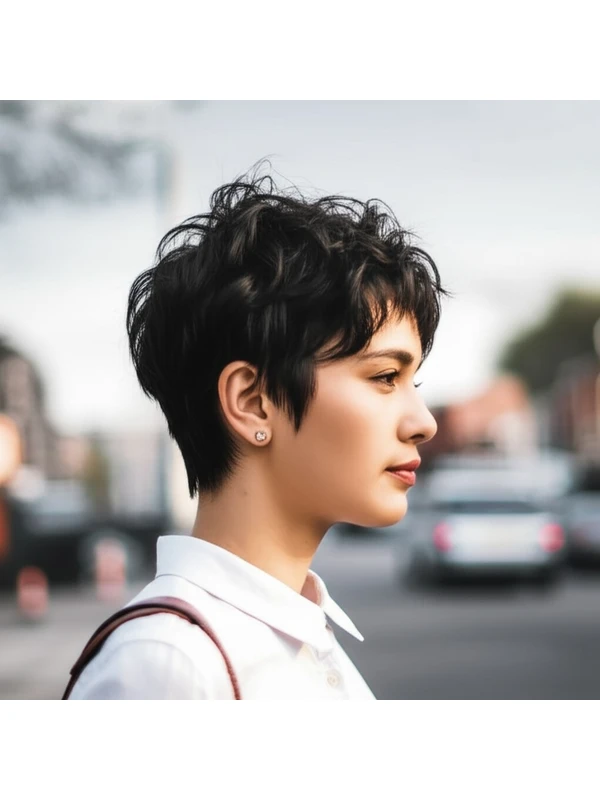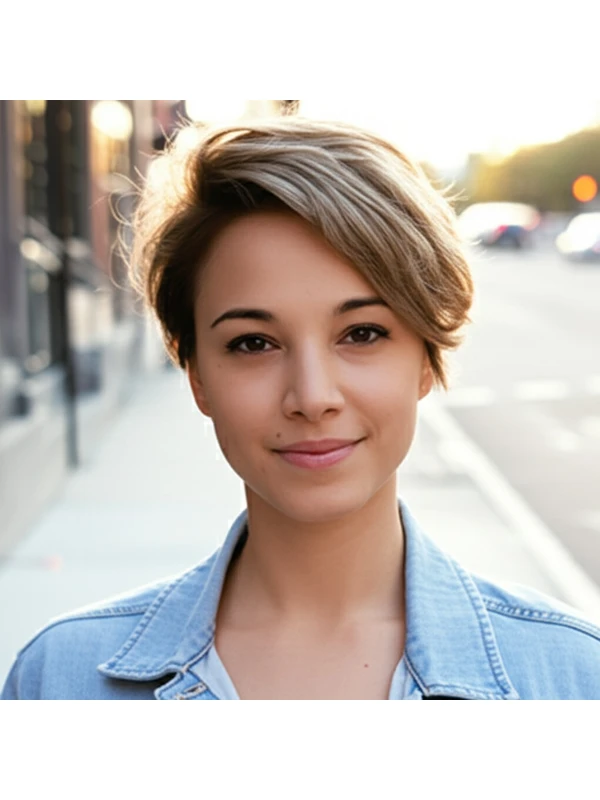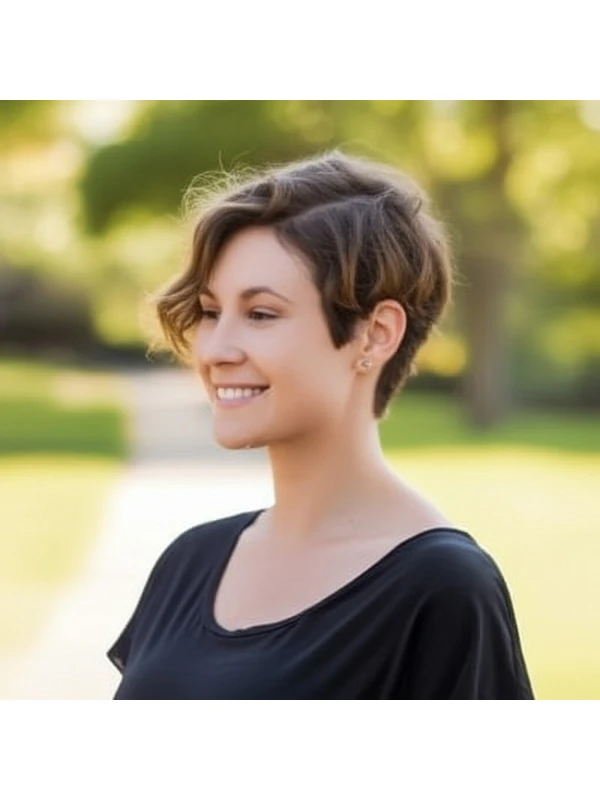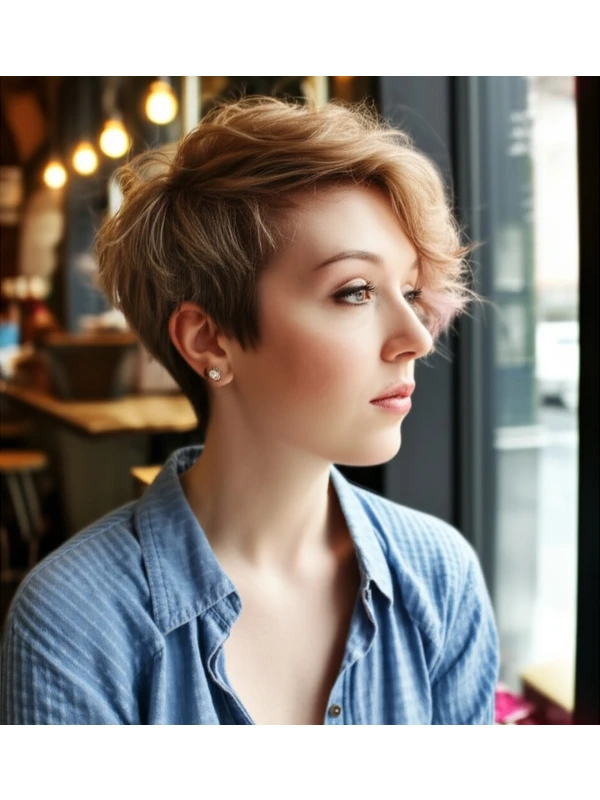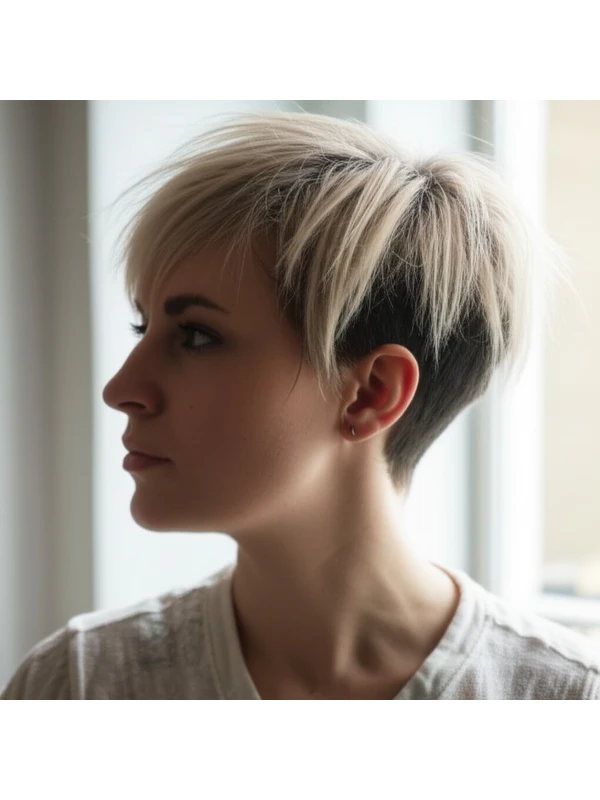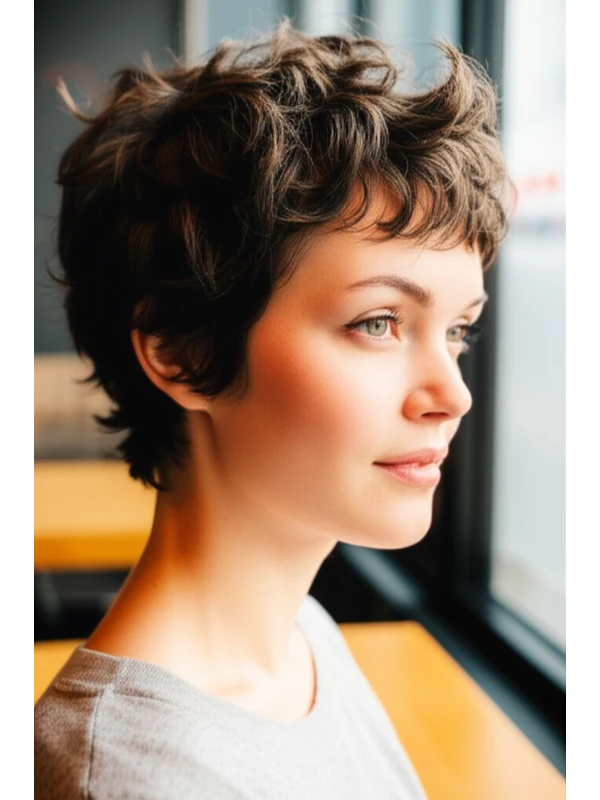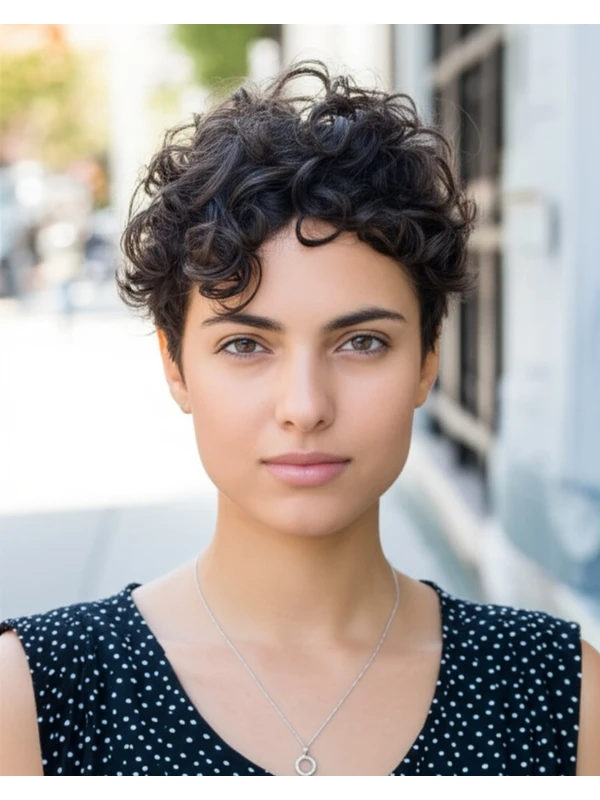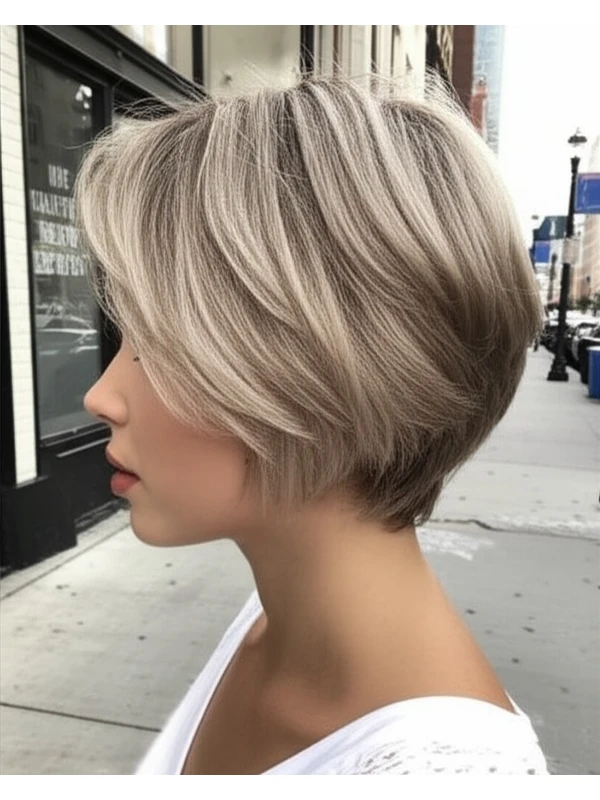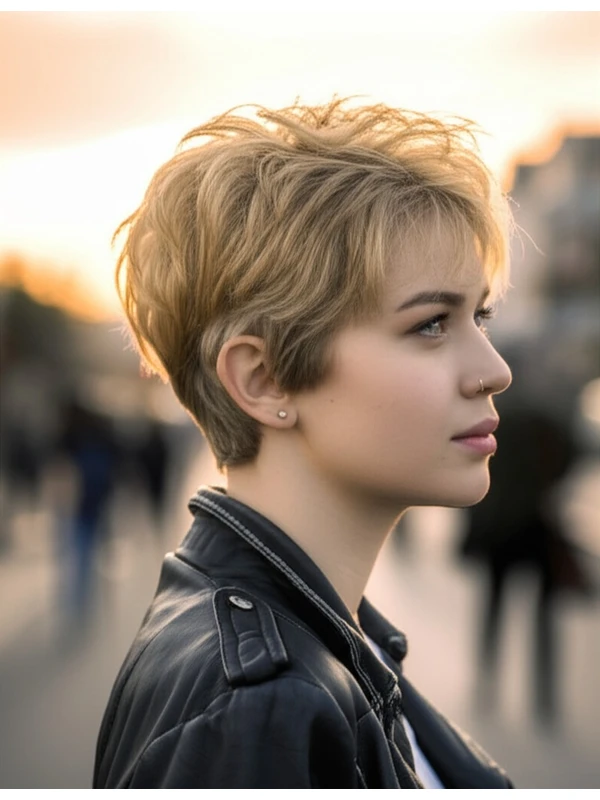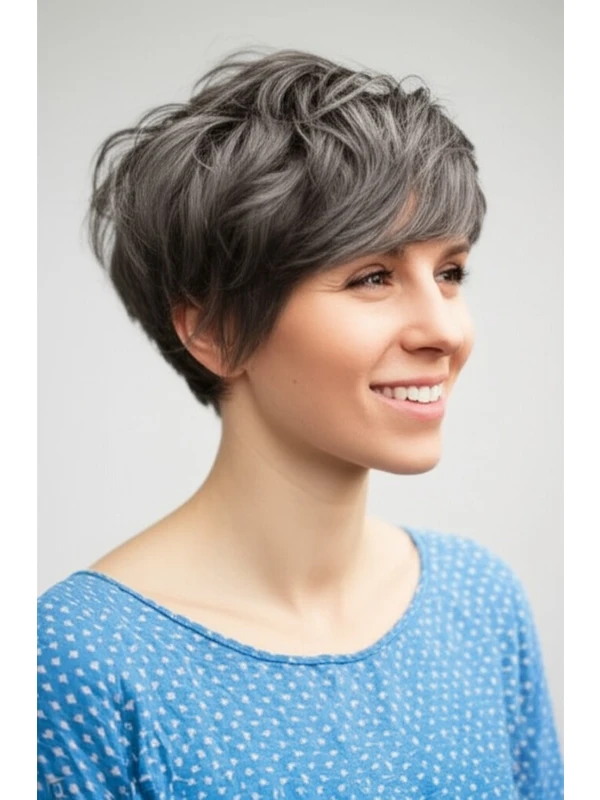#The Asymmetrical Pixie: A Bold & Beautiful Style Guide
The asymmetrical pixie is a captivating haircut that exudes confidence and modern flair. It’s more than just short hair; it's a statement! This guide will walk you through everything you need to know about rocking this chic style, from finding the right fit for your face shape to mastering daily styling.
#1) Background & Definition: What is an Asymmetrical Pixie?
An asymmetrical pixie cut isn’t just one thing – it's a family of looks! At its core, it involves shorter hair on one side (or top) and longer hair on the other, creating visual interest and movement. Think of it as a haircut with intentional imbalance.
- Geometry: It’s built around layers that are intentionally different lengths. The shortest sections often frame the face, while the longest can graze the jawline or even extend slightly beyond.
- Key Features: Volume is key – usually higher on one side than the other. Texture (piece-y and undone) is almost always part of the look.
- Length Ranges: Generally, the shortest layers are no longer than 1 inch, while the longest can reach up to 3-4 inches. This range allows for a lot of personalization!
- Alternative Names: Sometimes called an angled pixie, textured bob (if it’s slightly longer), or even just “a short haircut with asymmetry.”
#2) Face Shape Fit: Finding Your Perfect Angle
The asymmetrical pixie can be incredibly flattering on many face shapes. However, small adjustments to the cut and fringe are key for optimal balance.
- Oval: Lucky you! This style generally works beautifully. Play with volume placement – a slightly higher lift at the crown adds height. A side-swept fringe softens the look further.
- Round: The asymmetry is your friend here! It visually slims the face and creates angles. Keep the sides shorter, avoiding fullness around the cheeks. A long, angled fringe that sweeps away from the center can elongate the face. Avoid blunt bangs.
- Square: Soften those strong jawlines with a layered asymmetrical pixie. The asymmetry breaks up the angularity. A textured fringe (not too heavy) will add softness.
- Heart: Balance a wider forehead and pointed chin by keeping volume lower on the top of your head, avoiding height at the crown. A wispy, side-swept fringe is ideal.
- Diamond: Similar to heart shapes, focus on softening angles. The asymmetry can highlight cheekbones beautifully. A longer fringe that blends into the layers works well.
- Oblong (Long): Add width with volume and strategic layering. Avoid styles that make your face appear even longer. A fuller fringe or shorter side lengths can help balance proportions.
#3) Body Proportions & Height Guidance: Silhouette Harmony
Your overall body shape and height influence how the asymmetrical pixie will look on you.
- Petite: Shorter, more dramatic asymmetry creates a bolder statement. Avoid overly long layers that might overwhelm your frame.
- Average: You have the most flexibility! Experiment with different lengths and volume placements to find what flatters you.
- Tall: Longer layers can add visual interest without making you feel overwhelmed by shortness.
- Narrow Shoulders: Volume placed higher on one side creates a wider, more balanced silhouette.
- Broad Shoulders: Avoid adding too much volume at the shoulders to prevent them from appearing even broader. Keep the sides relatively close-cropped.
- Short Neck: Shorter layers and height at the crown visually elongate your neck. Avoid long, sweeping bangs that can make it look shorter.
- Long Neck: Longer layers and a fringe (if desired) can help fill out the space around your face and shorten the appearance of your neck.
#4) Works Best With Hair Types & Densities: Texture Matters!
The asymmetrical pixie adapts to various hair types, but understanding how they behave is crucial for a successful cut.
- Straight: This style shines with straight hair because the asymmetry is clearly defined. However, it can look flat without proper layering and texture.
- Wavy: Waves add natural movement and volume! The layers will enhance this effect. Be mindful of cowlicks – they might need to be worked with, not against.
- Curly/Coily: This cut can be gorgeous with curls, but shrinkage is a major factor! Communicate your curl pattern to your stylist; they’ll need to cut longer than you expect to account for it. Consider tighter layers for better definition and bounce.
- Fine Hair: Layers are essential to create the illusion of volume. A side part adds lift at the roots.
- Medium/Thick Hair: This style handles thickness well, but be sure your stylist thins out enough to prevent a bulky look.
- Density Tips: For denser hair, more layers and point-cutting techniques are needed for lightness and movement. For finer hair, strategic layering creates the illusion of density.
#5) Styling Variations: From Casual Cool to Evening Elegance
The beauty of this cut is its versatility!
- Sleek vs. Textured: Sleek styles use smoothing products; textured looks embrace natural waves or create piece-y definition with texturizing sprays and waxes.
- Middle vs. Side Part: A side part adds asymmetry and volume, while a middle part can be more modern and balanced (though less common).
- Fringe Variations: Angled, wispy, choppy – the fringe options are endless! Consider your face shape when choosing a style.
- Occasion Styling:
- Casual: Air-dry with texturizing cream for effortless cool.
- Office: Smooth and polished with serum or pomade.
- Evening: Add volume at the roots with mousse, then finish with hairspray for hold.
#6) Maintenance: Keeping Your Pixie Perfect
Regular trims are vital to maintain the shape of an asymmetrical pixie.
- Trim Cadence: Every 4-6 weeks is typical.
- At-Home Routine: Wash 2-3 times a week (or as needed). Apply leave-in conditioner for moisture and definition.
- Heat vs Air Dry: Air drying enhances natural texture, but heat styling can create sleekness or volume. Use heat protectant if using tools.
- Product Checklist:
- Shampoo & Conditioner: For your hair type (color-safe is a plus!)
- Leave-in Conditioner: To hydrate and detangle.
- Styler: Mousse, texturizing cream, pomade – depending on desired look.
- Finishing Spray: Hairspray or texture spray for hold.
- Estimated Daily Styling Time: 5–15 minutes (can be shorter with air drying).
#7) Grow-Out Roadmap: Evolving Your Look
The asymmetrical pixie changes as it grows!
- Months 1-3: The initial shape is most defined. Regular trims maintain the asymmetry.
- Months 3-6: The longer layers start to blend, softening the edges. You can adjust the style by adding more volume or changing your part.
- Maintaining Shape: Between cuts, use styling products to enhance texture and keep the asymmetry visible.
#8) Color Pairings: Enhancing Your Pixie’s Dimension
Color dramatically impacts how this cut looks!
- Cool Undertones (pink, blue): Ashy blondes, cool browns, or even a hint of lavender can be stunning.
- Warm Undertones (yellow, gold): Honey blondes, caramel highlights, or copper tones will complement your skin beautifully.
- Low-Commitment Options: Balayage or babylights add subtle dimension without a harsh root line.
#9) Season & Occasion Guide: Adapting to the Moment
- Spring/Summer: Embrace lighter colors and textured styles for a breezy vibe.
- Fall/Winter: Richer, deeper tones and sleek styling create a sophisticated look.
- Work: Polished and professional – smooth with minimal texture.
- Weddings: Romantic waves or an updo that showcases the asymmetry.
- Parties: Bold color pops or playful accessories.
#10) Cost & Time: Salon Investment
- Salon Time: Expect to spend anywhere from 30-60 minutes, depending on complexity and stylist expertise.
- Price Range: Generally falls in the mid-range for haircuts – expect a slightly higher price due to the precision involved.
#11) Pros & Cons: Weighing Your Options
Pros: Chic, modern, easy to style (once you master it!), flattering on many face shapes, versatile. Cons: Requires regular trims, can be high-maintenance if you want a super polished look, may not suit everyone's personal style.
#12) Salon Consultation Script: Your Checklist
Use these prompts when discussing your desired pixie with your stylist!
- "I love the asymmetrical pixie look – can we achieve something similar?"
- “My face shape is [oval/round/square/heart/diamond/oblong]. What adjustments would you recommend?”
- "How will this style work with my hair texture and density?"
- "Can we discuss fringe options? I'm considering a [side-swept/angled/wispy] fringe."
- “What products do you recommend for styling and maintenance?”
FAQs: Your Burning Questions Answered
- Is an asymmetrical pixie difficult to style? It can be initially, but with practice and the right products, it becomes easier.
- Can I have an asymmetrical pixie if my hair is very curly/coily? Yes! But communication with your stylist about shrinkage is key.
- What if I don’t like asymmetry? This style isn't for you! Explore other short haircuts that offer more balance.
- How much will it cost to color my asymmetrical pixie? Color costs vary widely; discuss options and pricing with your stylist beforehand.
- Can I do this at home without a professional cut? While possible, the results are unlikely to be as polished or flattering as a professionally styled cut.
- Will an asymmetrical pixie make me look older? Not necessarily! It can be incredibly youthful and modern when done correctly. Focus on finding a style that complements your features and personality.

